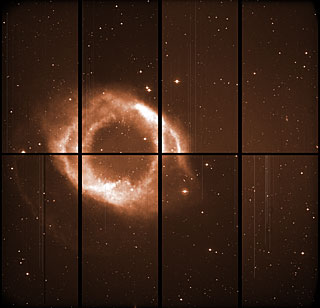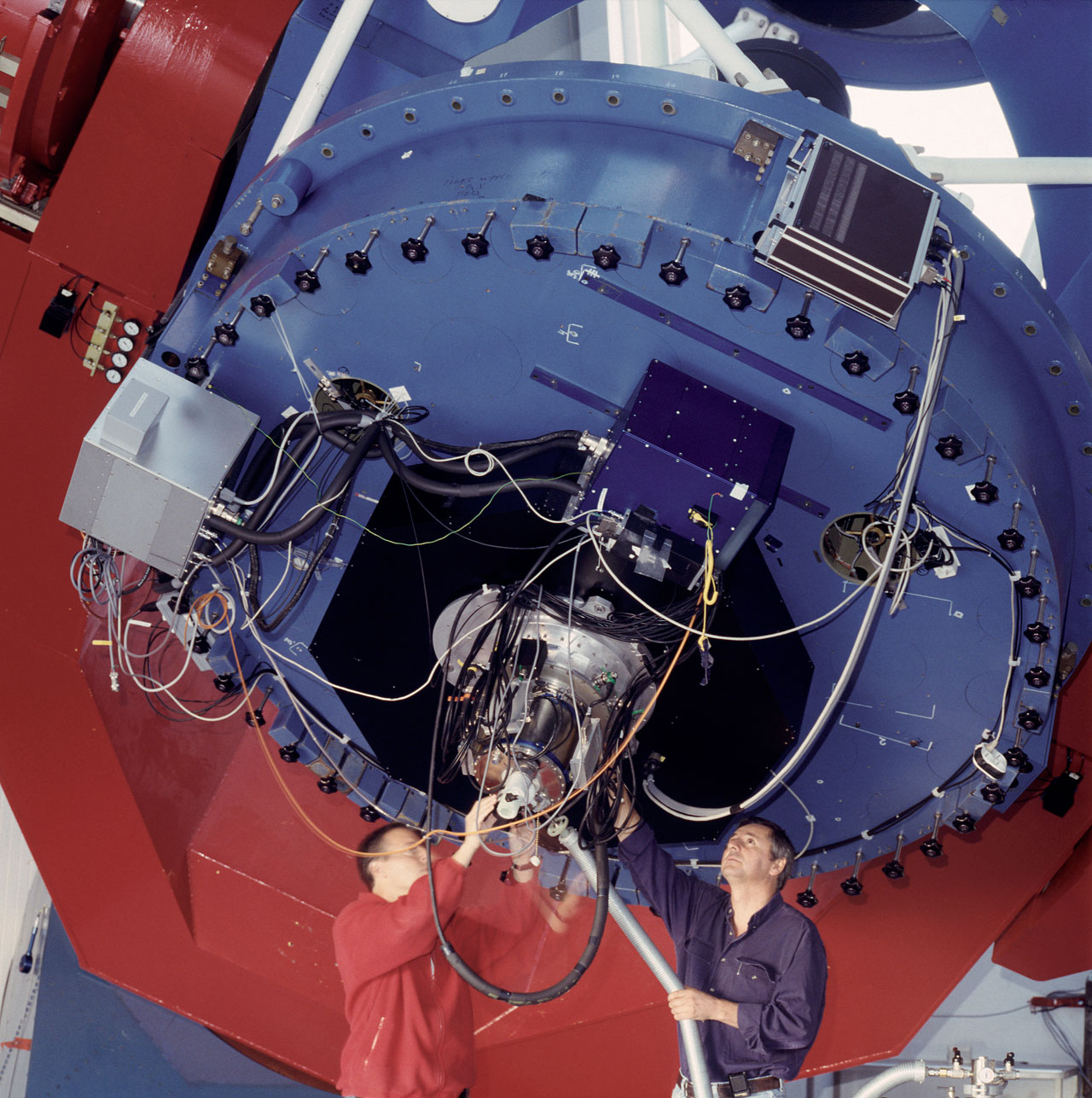WFI
Wide Field Imager
 The larger a telescope (or rather, its primary mirror), the more light it can collect. The more light we can collect, the more detailed information we can gather about the Universe. However, the image sensor, or the device attached to the telescope which converts an optical image into an electronic signal, can also increase these light-gathering properties.
The larger a telescope (or rather, its primary mirror), the more light it can collect. The more light we can collect, the more detailed information we can gather about the Universe. However, the image sensor, or the device attached to the telescope which converts an optical image into an electronic signal, can also increase these light-gathering properties.
WFI, or the Wide Field Imager, is the best example of this concept. WFI is a detector similar to that found in your camera, but with a whopping 67 million pixels, installed at the MPG/ESO 2.2-metre telescope at La Silla Observatory. Such a detector is able to obtain detailed views of extended, very faint celestial objects. In terms of sensitivity, WFI goes to 24th magnitude, 40 million times fainter than the human eye can see.
 WFI is built around eight CCDs with high sensitivity that span a wavelength range from ultraviolet to near-infrared light. The size of the WFI detector is 12.5 × 12.5 centimetres — imagine that in your phone!
WFI is built around eight CCDs with high sensitivity that span a wavelength range from ultraviolet to near-infrared light. The size of the WFI detector is 12.5 × 12.5 centimetres — imagine that in your phone!
One single WFI image is equivalent to 0.14 gigabytes of data, a huge quantity of information which must be read and transferred properly and efficiently from the chips to the computer. For that reason, ESO engineers developed a system called FIERA, a high-tech CCD controller that processes this information in only 27 seconds — the equivalent to reading a book at a rate of almost 1000 pages per second! Importantly, FIERA sustains this speed without adding noise, which could reduce the quality of the image. It was revolutionary at the time, and paved the way to the newer systems driving OmegaCAM on the VST, which is around four times bigger.
When WFI arrived at La Silla it was part of the first generation of survey facilities at ESO, and thanks to its incredible capacity it has become one most iconic instruments of the observatory. More than 20 images of the ESO Top 100 are taken with WFI, some of which are breathtaking. But most importantly, instruments like WFI allow astronomers to carry out observation programmes that have led to discoveries of some amazing objects in the Universe that can be studied in greater detail with bigger telescopes, like the Very Large Telescope at Paranal.
What makes WFI even more special is its large collection of filters: over 50 large glass filters are mounted in a carousel in the instrument, and can be used to select a specific colour for the observations. This unique collection was designed to discover distant quasars and galaxies, and get an estimate of their distance using the photometric redshift technique.
WFI was created after a recommendation by the La Silla 2000 Working Group to offer this type of instrument to the astronomical community. It represents the outcome of a joint venture between ESO, the Max-Planck-Institut für Astronomie (MPIA) and the Osservatorio Astronomico di Capodimonte (OAC). In October 2013, the MPG/ESO 2.2-metre telescope was handed back to the MPIA.
Science highlights with WFI
- Observations find that star clusters age at different rates (eso1252)
- Astronomers find the strongest link so far between the most powerful bursts of star formation in the early Universe, and the most massive galaxies found today (eso1206)
- Observations suggest that planets around stars are the rule rather than the exception (eso1204)
- Galactic cannibalism brings an exoplanet of extragalactic origin within astronomers' reach (eso1045)
- The Superwind Galaxy NGC 4666 (eso1036)
- Deepest Wide-Field Colour Image in the Southern Sky (eso0302)
- Two Saturnian moons found at La Silla (eso0036)

WFIThe authoritative technical specifications as offered for astronomical observations are available from the Science Operation page.
|
